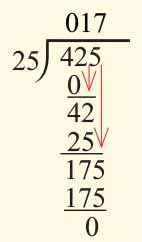
Nursing TEAS Guide
Julie Henry, Henry
- 44 pages
- English
- ePUB (mobile friendly)
- Available on iOS & Android
Nursing TEAS Guide
Julie Henry, Henry
About This Book
Essential academic skill requirements covered for the TEAS test for entry into Nursing School, all in 6 laminated pages. Many people have underestimated this test their first time around and had to take it again, do not be one of them. These 6 laminated pages are a guide to success. Nurses are some of the biggest fans of QuickStudy guides, so start your collection and get started on a new career. Suggested uses:
• Students –study companion that can be reviewed any where and any time, to ensure you are keeping your goals in sight
• Teachers/Professors – a roadmap for your students training to take the TEAS to start a Nursing career
• Nursing Schools – a great opportunity to provide this tool for incoming students to help them pass the test and enter your program
Frequently asked questions
Information

- Calculations inside parentheses should be performed first.
- Next, do multiplication and division, moving from left to right.
- Then, do addition and subtraction, moving from left to right. 5 + (6 × 4 – 3) – 13= 5 + (24 – 3) – 13= 5 + 21 – 13= 13
- The sum of two positive numbers is a positive number. 3 + 4 = 7
- The sum of two negative numbers is a negative number. –3 + (–4) = –7
- The sum of one positive number and one negative number can be either a positive or a negative number, depending on which number is greater. –3 + 4 = 1 –4 + 3 = –1
- When adding large numbers, line them up so the right sides are aligned vertically.
344 +299 643
- Subtraction is taking away one number from another. 8 – 4 = 43–8 = 3 + (–8) = –3
- When subtracting large numbers, line them up so the right sides are aligned vertically.
344 –299 45
- The product of two positive numbers is a positive number. 3 × 8 = 24
- The product of two negative numbers is a positive number. (–3) × (–8) = 24
- The product of a positive number and a negative number is a negative number. 8 × (–3) = –24
- When multiplying large numbers, line them up so that the right sides are aligned vertically.
159 ×25 3975
- The quotient of two positive numbers is a positive number. 9 ÷ 3 = 3
- The quotient of two negative numbers is a positive number. (–9) ÷ (–3) = 3
- The quotient of a positive number and a negative number is a negative number. (–9) ÷ 3 = –3
- Long division is used to divide larger numbers. 425 ÷ 25Answer:17

- The LCD is the smallest number into which two or more denominators will divide evenly; this number is used for adding and subtracting fractions. EX: What is the LCD of
and1 5
?3 4 The smallest number that is divisible by both 5 and 4 is 20, so the LCD is 20.
- If the fractions have the same denominator, add the numerators; the denominator stays the same.EX:
+1 9
=5 9
; since both the numerator and the denominator are both divisible by 3, you will want to write the answer in its reduced form, which is6 9
.2 3 - If the fractions have a different denominator, you will first need to find the LCD. EX: The LCD is 12, so rewrite equivalent fractions with a denominator of 12:
+2 3 3 4
×2 3
=4 4
;8 12
×3 4
=3 3
; then add the equivalent fractions:9 12
+8 12
=9 12
. Since the numerator is greater than the denominator, this can be reduced to a mixed number,17 12
.1 5 12
- If the fractions have the same denominator, subtract the numerators; the denominator stays the same.
−5 9
=1 9 4 9 Since the ...